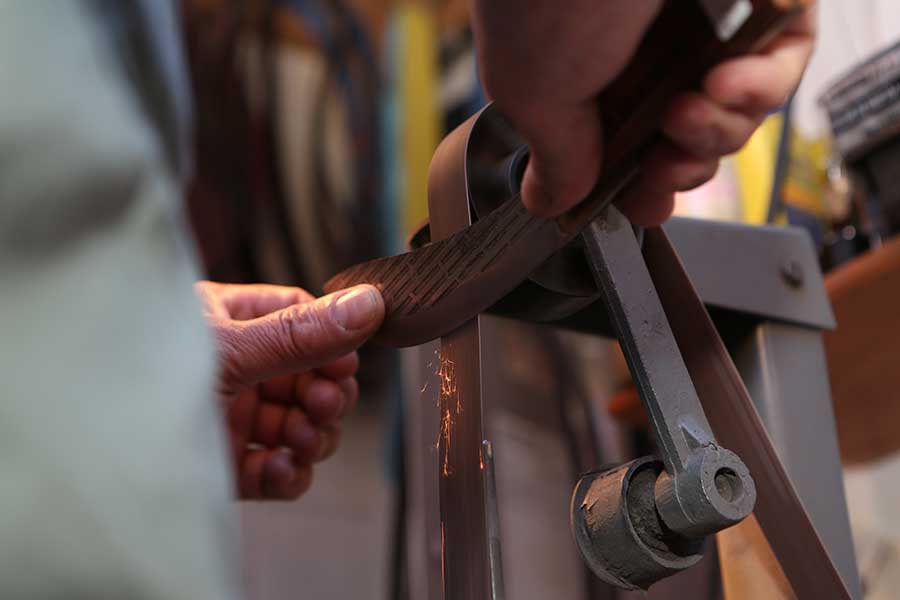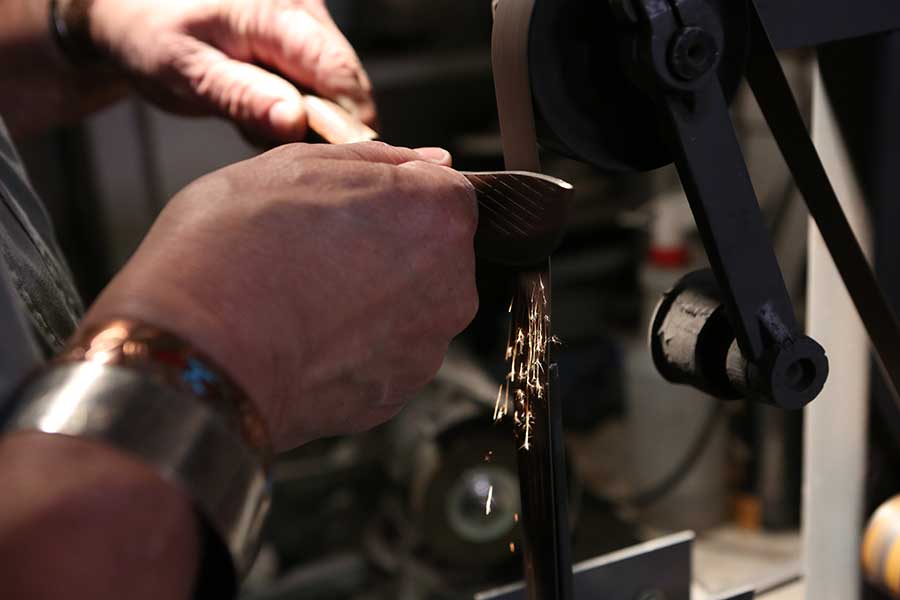Sharpening Tools & Services
Important Information about Knife Sharpening
1. Call first for availability if you plan to arrive later in the day as can only take a certain amount in to have them done by the next day. Earlier is the best chance.
2. There is a drop off limit of four (4) knives/articles, per customer.
3. Items dropped off Friday morning will be ready for pickup Saturday between 10am-2pm.
Edge-N-Knife offers local Professional sharpening services for kitchen, pocket, hunting knives as well as scissors and garden tools. Wavy-edge, serrated knives, also known as bread knives, have a different pricing structure as they require specialty sharpening. The flat side of a serrated knife should never be touched; sharpening only the bevel side at each serration is the correct procedure. If you have a specific blade or tool that’s different bring it in, we’ll be glad to take a look and let you know if we are able to sharpen it.
Pricing is based on the length of the blade and any necessary repairs, ex. bent or broken tip or large nicks.
Knife sharpening at home
Edge-N-Knife stocks honing rods of steel, ceramic and diamond as well as sharpening stones of multiple grits. These tools will help maintain the edge on your knife for a long period of time. The angle to maintain when using a steel to hone a typical kitchen knife can range from 16 to 22 degrees. We can show you an easy way to determine your angle. Knife steeling only needs to be performed when the edge fails to perform as well as you need it to.
What is the most common way to dull a kitchen knife?
Have you ever finished chopping your veggies and scraped them from the cutting board into the pan with the blade edge of your knife? Believe it or not, this is the most common way to dull a kitchen knife.
Scraping food into the pan with the blade edge curls the edge, dulling it for cutting purposes. The best way to extend the life of your cooking is to scrape food into the pan with the back (non-blade edge) of the knife.
Contact Us
Contact Edge-N-Knife for more information, or visit the store to take advantage of our sharpening services today.
Address
3073 West 11th Avenue
Eugene, Oregon
97402
Call Us: 541-688-4552
Store Hours
Friday: 11:00 am – 5:00 pm
Saturday: 10:00 am – 2:00 pm
Sunday – Thursday: CLOSED
Also available by appointment.



